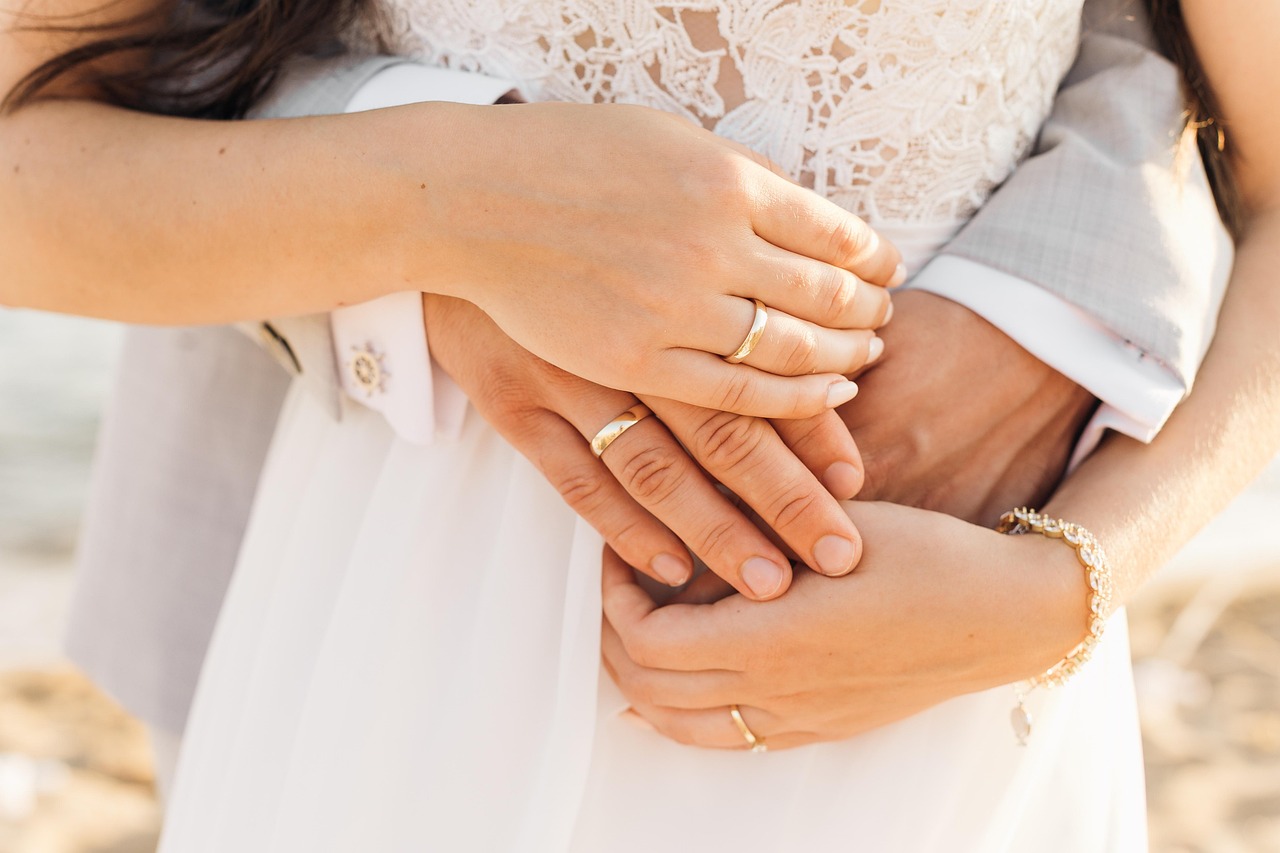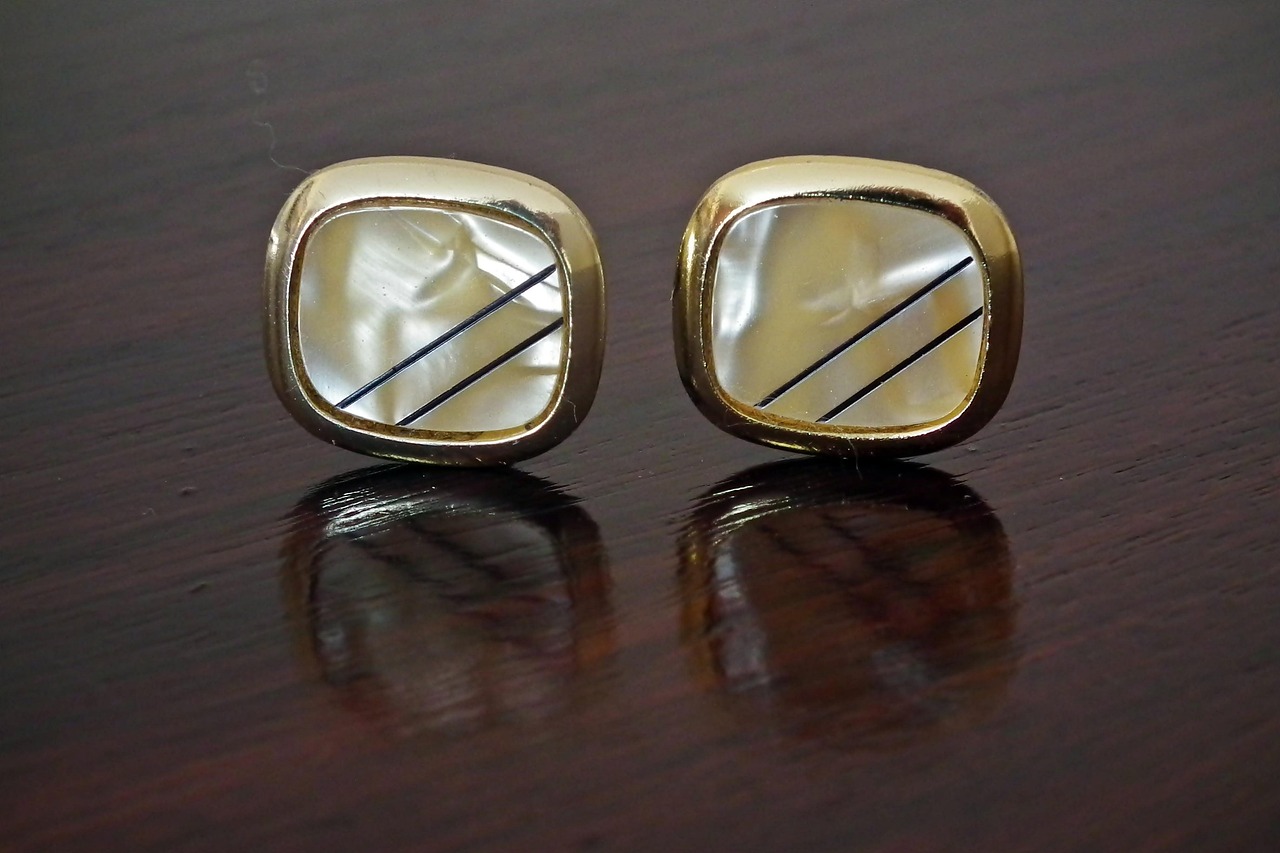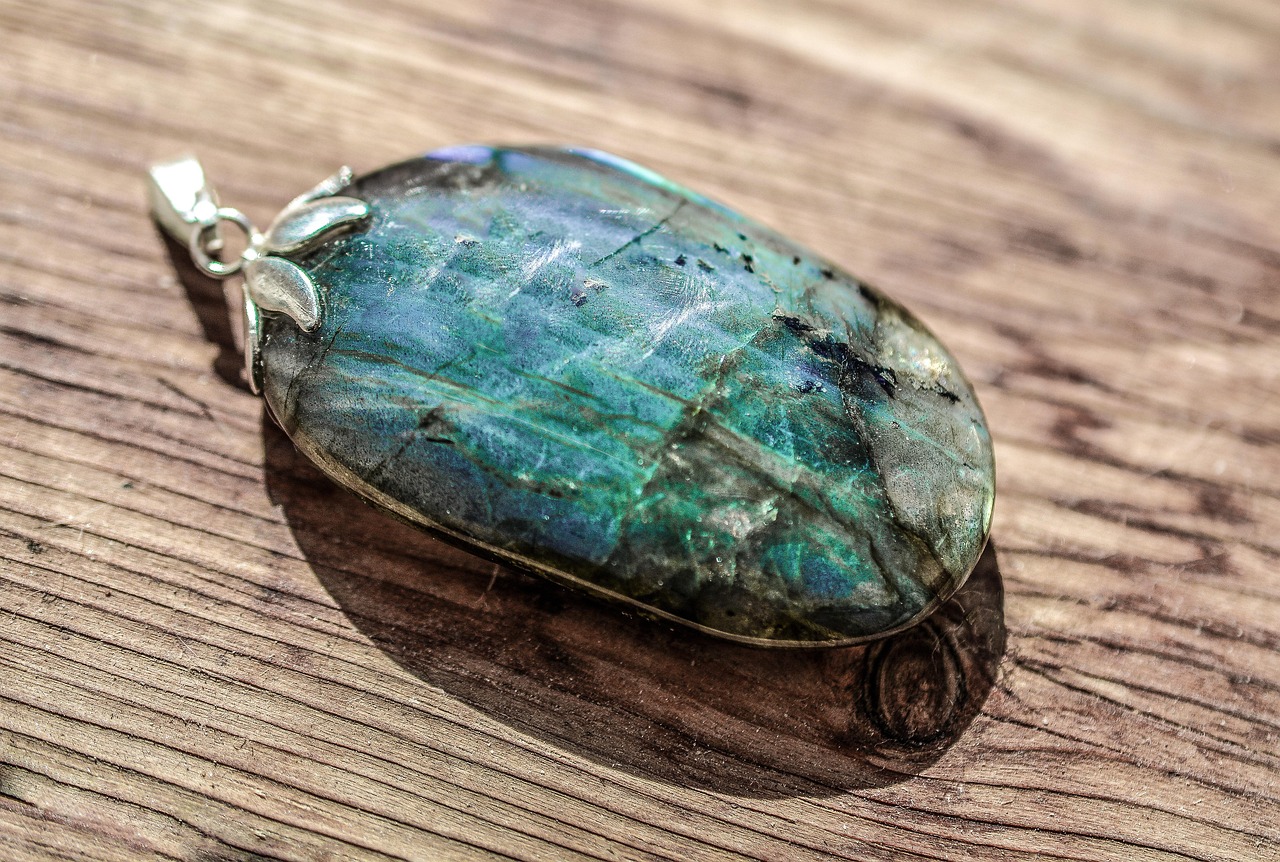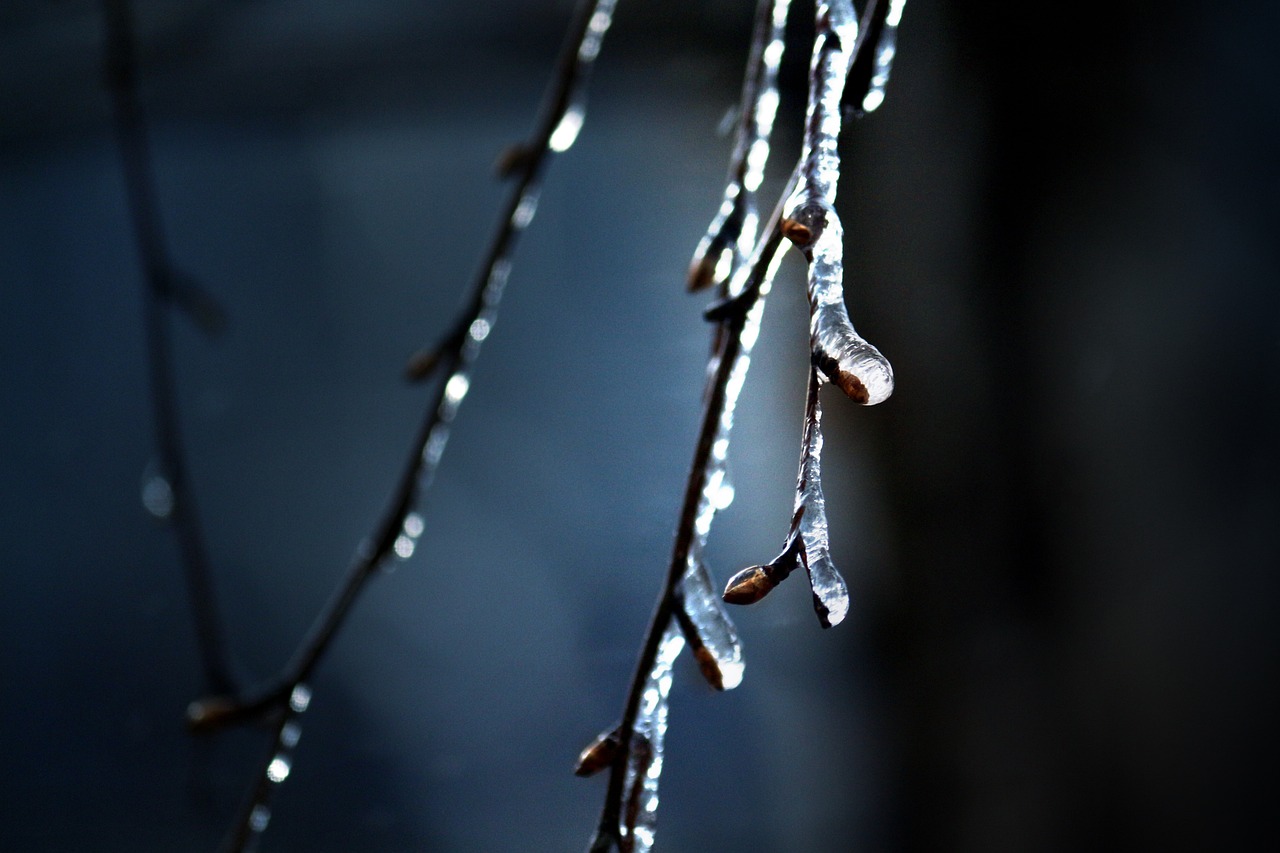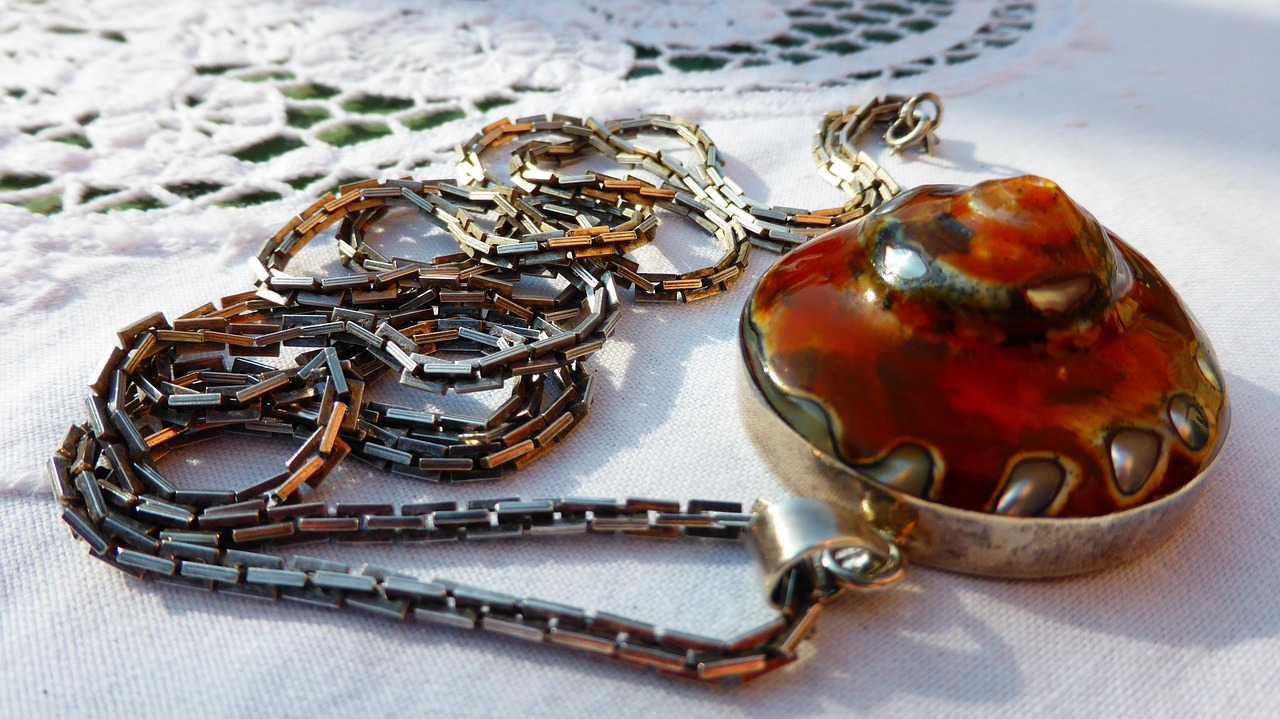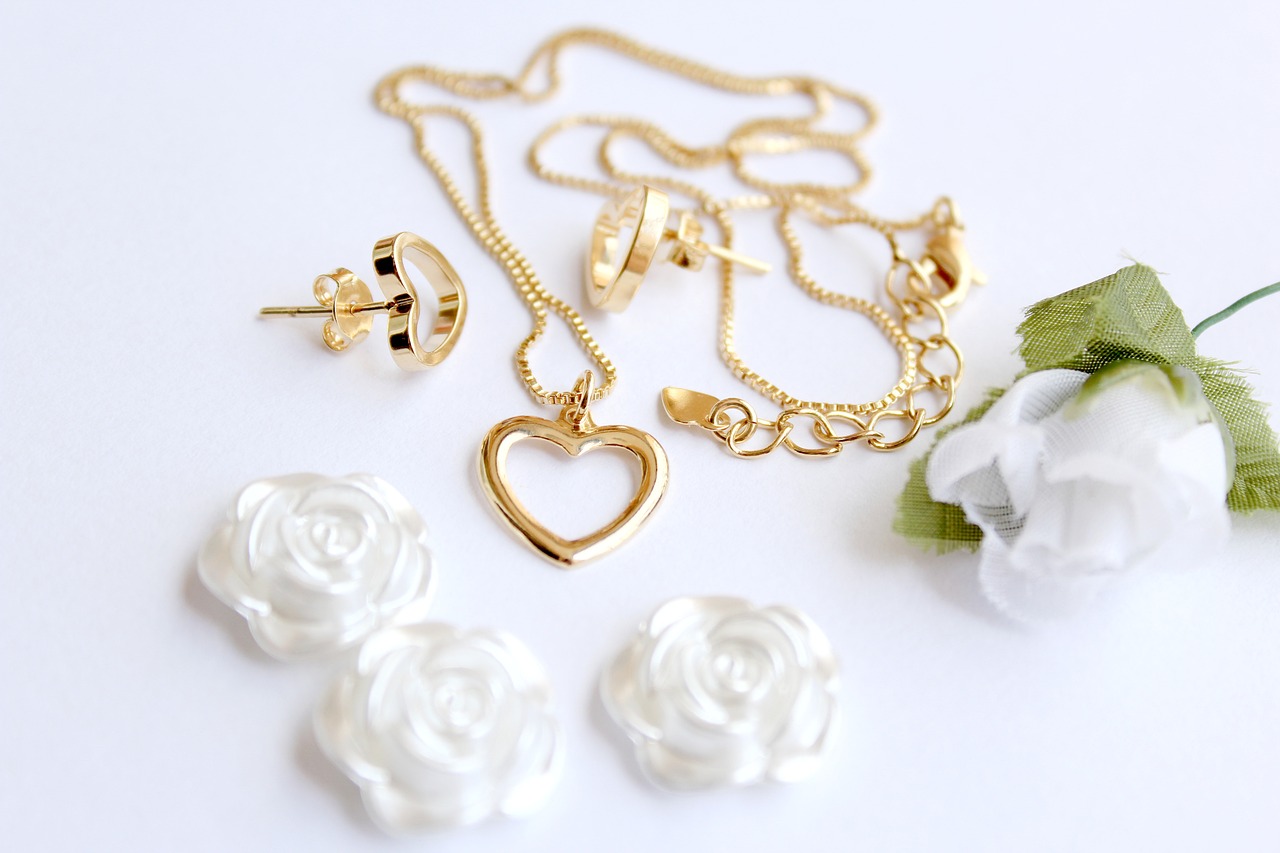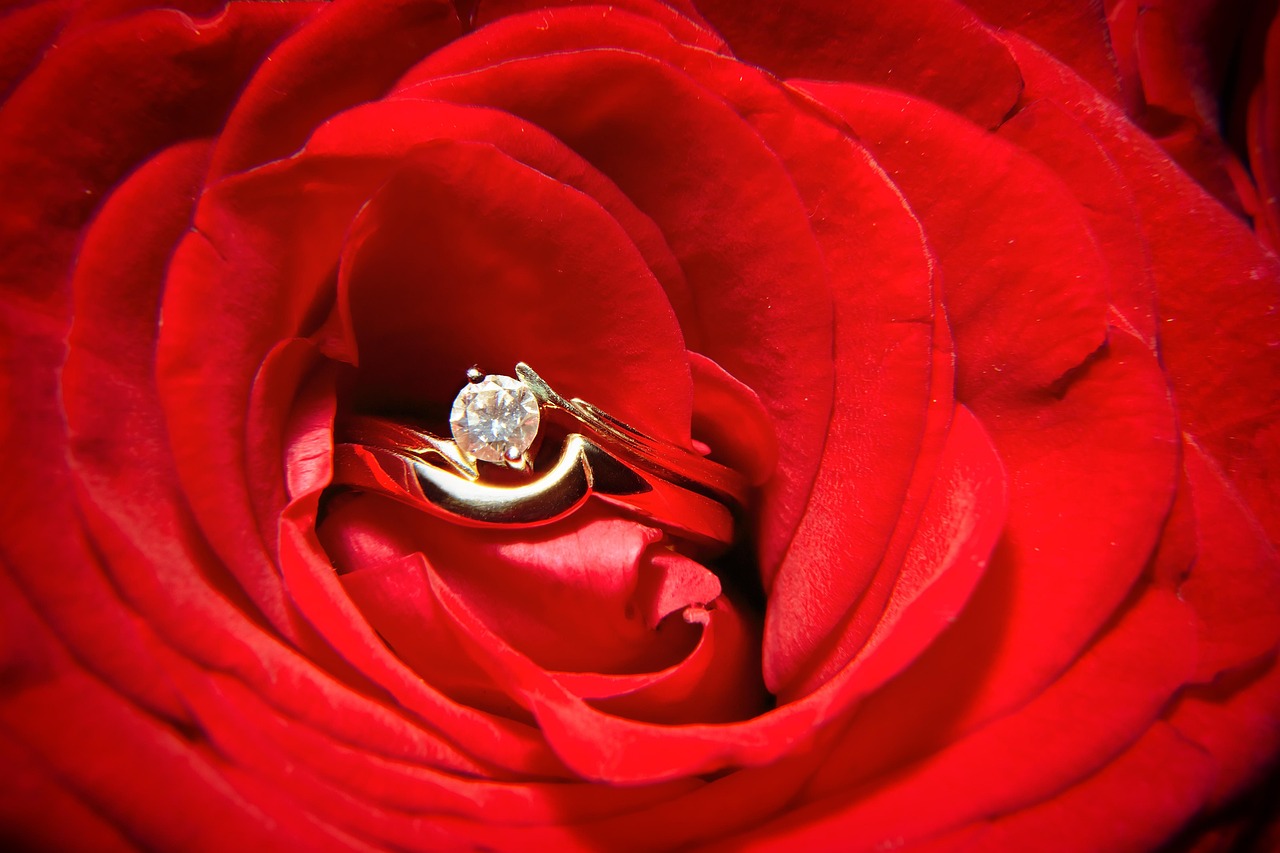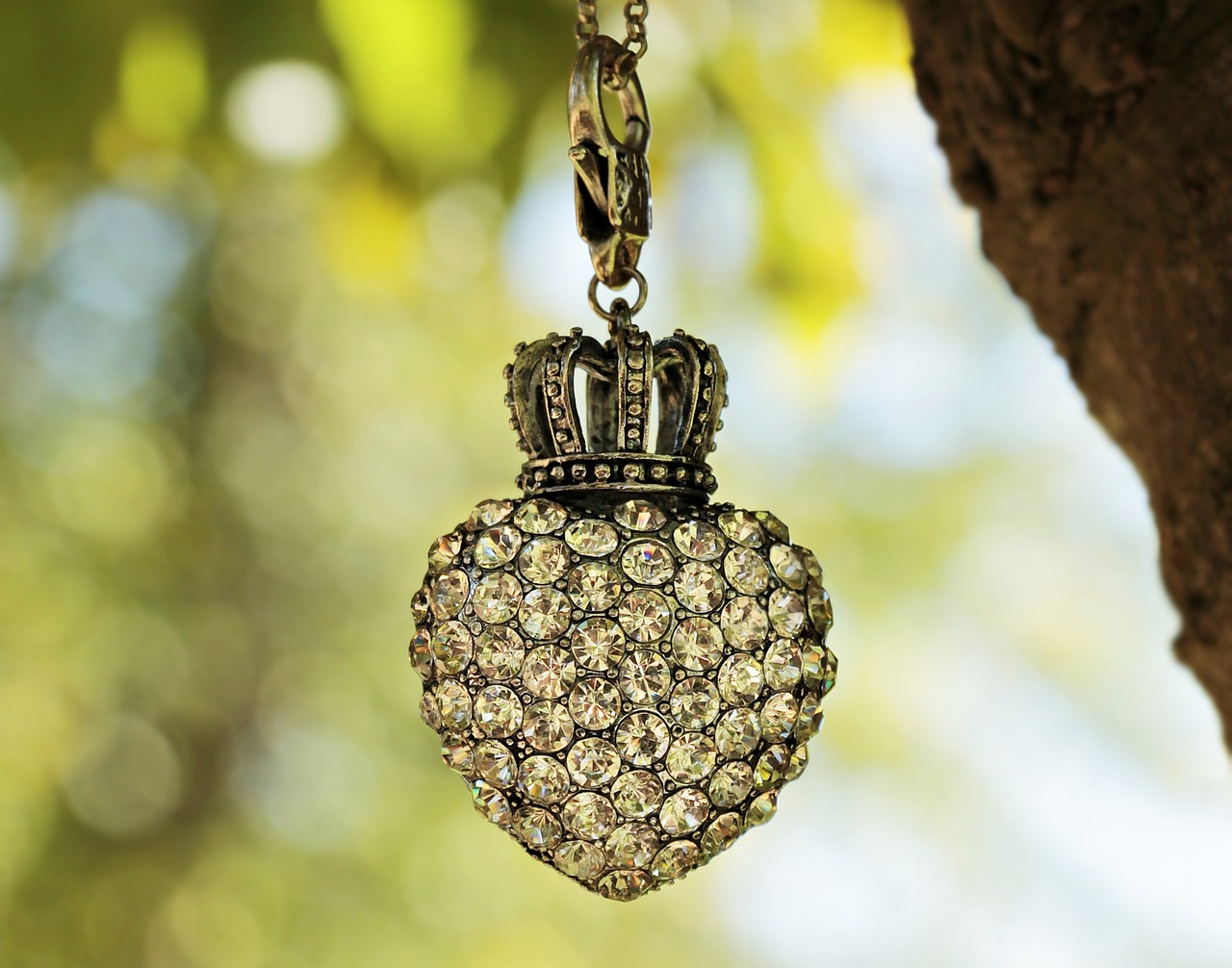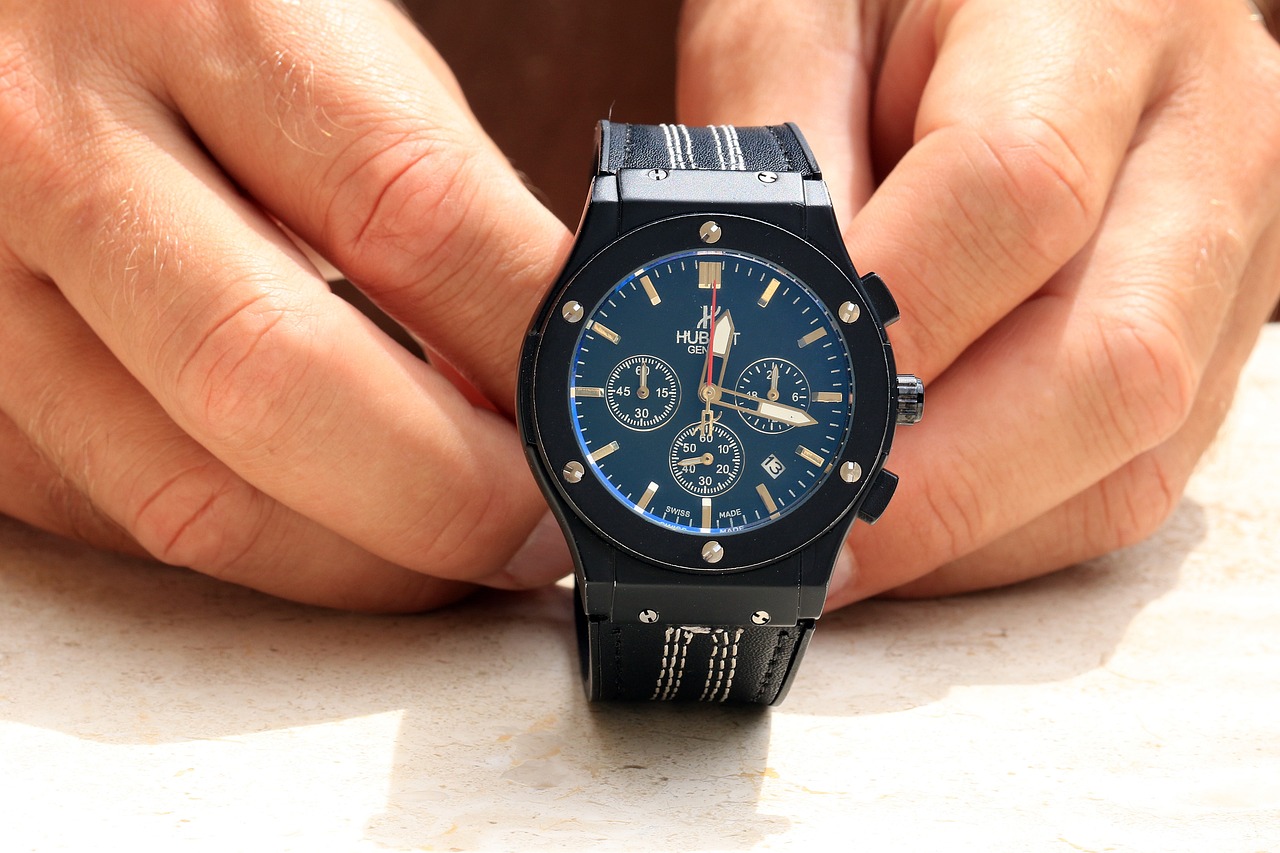This article explores effective strategies for maintaining jewelry in humid environments, focusing on prevention techniques and care tips to ensure your precious pieces remain in excellent condition.
Understanding the impact of humidity on jewelry is crucial. High moisture levels can lead to tarnishing, corrosion, and other forms of damage, particularly to metals and gemstones. Humidity creates an environment where moisture can settle on jewelry, promoting the growth of tarnish and causing metals to degrade.
Certain types of jewelry are more susceptible to humidity-related damage. Knowing which materials are vulnerable can help you take extra precautions to protect your collection.
- Gold and Silver Jewelry: These metals can tarnish in humid conditions.
- Gemstone Jewelry: Different gemstones react differently to humidity.
Gold jewelry is relatively resistant to tarnish, but humid conditions can still pose risks. To keep your gold pieces shining, consider the following tips:
- Store gold jewelry in a cool, dry place.
- Use anti-tarnish pouches or cloths.
Silver, on the other hand, is particularly prone to tarnishing. To safeguard your silver jewelry from moisture damage:
- Keep silver pieces in airtight containers.
- Regularly polish silver to remove tarnish buildup.
Proper storage is essential for protecting jewelry from humidity. Explore various storage options that minimize exposure to moisture:
- Using Anti-Tarnish Materials: Incorporating anti-tarnish materials in storage can significantly extend the life of your jewelry.
- Creating a Controlled Environment: Using dehumidifiers and silica gel packs can help mitigate humidity effects.
Regular maintenance is key to preserving jewelry. Here are some practical daily care tips:
- Cleaning Techniques: Use appropriate cleaning methods to prevent buildup and damage.
- When to Remove Jewelry: Take off your jewelry during activities that may expose it to moisture, such as swimming or showering.
Recognizing the signs of humidity damage is essential for timely intervention. Common issues include:
- Tarnishing and Discoloration: Early indicators of humidity damage.
- Corrosion and Pitting: Signs of irreversible damage that need immediate attention.
When home care isn’t enough, professional services can restore your jewelry. It’s important to know when to seek expert help:
- Finding a Reliable Jeweler: Choose a reputable jeweler who can handle your pieces with care.
- Cost of Professional Services: Understand the costs associated with cleaning and restoration services.
Implementing long-term strategies can help protect your jewelry from humidity damage over time:
- Investing in Quality Pieces: Quality jewelry is often more resilient to environmental factors.
- Regular Inspections: Regularly check your jewelry for potential issues.
By following these guidelines, you can ensure that your jewelry remains in excellent condition, even in humid climates. Protecting your precious pieces requires diligence, but with the right strategies, you can enjoy your jewelry for years to come.

Why is Humidity Harmful to Jewelry?
Understanding the impact of humidity on jewelry is crucial for maintaining its beauty and longevity. In humid environments, high moisture levels can significantly affect various types of jewelry, leading to issues such as tarnishing, corrosion, and other forms of damage. This article delves into the reasons why humidity is harmful to jewelry, the specific materials most affected, and practical tips for prevention.
High humidity creates an environment where moisture can accumulate on jewelry, particularly affecting metals and gemstones. Here are some key reasons why humidity poses a threat:
- Tarnishing: Metals such as silver and brass are particularly vulnerable to tarnishing when exposed to moisture. Humidity accelerates the oxidation process, leading to a dull appearance.
- Corrosion: Corrosion is a more severe form of damage that affects metals like gold and silver, especially when combined with other environmental factors such as salt or pollution.
- Gemstone Damage: Certain gemstones can absorb moisture, which may lead to discoloration or structural damage over time.
- Weakening of Settings: Humidity can also weaken the settings of gemstones, making them more susceptible to losing stones or becoming damaged.
Recognizing the specific risks associated with humidity can help you take proactive measures to protect your jewelry collection.
Some jewelry types are more susceptible to humidity-related damage than others. Here are the materials that require extra care:
- Gold and Silver: While gold is generally more resistant to tarnishing, silver is highly prone to it. Both metals can suffer from corrosion if left unchecked in humid conditions.
- Costume Jewelry: Often made from base metals and synthetic stones, costume jewelry can deteriorate quickly in humid environments.
- Gemstones: Soft or porous stones like opals and pearls can absorb moisture, leading to potential damage.
By understanding which types of jewelry are at risk, you can tailor your care and storage strategies accordingly.
Proper storage is essential for protecting jewelry from humidity. Here are some effective strategies:
- Use Airtight Containers: Storing jewelry in airtight containers can help minimize exposure to moisture.
- Silica Gel Packs: Including silica gel packs in your storage can absorb excess moisture, protecting your pieces.
- Anti-Tarnish Cloths: Wrapping jewelry in anti-tarnish cloths can provide an extra layer of protection against humidity.
Implementing these storage solutions can significantly extend the life of your jewelry.
Regular maintenance is vital for preserving jewelry in humid conditions. Here are some practical daily care tips:
- Clean Regularly: Wipe your jewelry with a soft, dry cloth after each wear to remove moisture and oils.
- Limit Exposure: Remove jewelry before activities that may expose it to excessive moisture, such as swimming or exercising.
- Check for Damage: Regularly inspect your pieces for signs of tarnishing or corrosion, and address any issues promptly.
By incorporating these daily care practices, you can help ensure that your jewelry remains in excellent condition despite the challenges posed by humidity.

What Types of Jewelry are Most Affected?
When it comes to jewelry, understanding the materials that are most vulnerable to humidity is essential for maintaining their beauty and integrity. Humid climates can wreak havoc on various types of jewelry, leading to tarnishing, corrosion, and other forms of damage. By identifying which materials are at risk, you can implement preventive measures to protect your treasured pieces.
Certain materials are inherently more susceptible to damage from high humidity levels. Here’s a closer look at the types of jewelry that require extra care:
- Silver Jewelry: Silver is notorious for tarnishing, especially in humid conditions. The moisture in the air can cause silver to react with sulfur compounds, leading to unsightly discoloration. To protect silver jewelry, consider using anti-tarnish pouches or storing it in a dry place.
- Gold Jewelry: While gold is generally resistant to tarnishing, it is not completely immune. Humidity can still affect gold-plated items or pieces with lower karat values. Regular cleaning with a soft cloth can help maintain its shine.
- Costume Jewelry: Often made with base metals and synthetic stones, costume jewelry can be particularly vulnerable to humidity. The coatings on these items can wear off, leading to rust and discoloration. It’s best to keep such pieces stored away from moisture.
- Pearls: Pearls are organic gems that can absorb moisture. While they are beautiful, excessive humidity can lead to a dull appearance or even damage the nacre. Store pearls in a breathable cloth and avoid exposing them to high humidity.
- Gemstone Jewelry: Different gemstones react differently to humidity. For example, porous stones like turquoise and opal can absorb moisture and become damaged over time. It’s crucial to understand the specific needs of each gemstone.
By recognizing these vulnerable materials, you can take proactive steps to safeguard your jewelry collection. Here are some additional tips:
- Regular Cleaning: Implement a routine cleaning schedule to remove dirt and moisture buildup. Use a gentle cleanser suitable for the specific material.
- Humidity Control: Consider using dehumidifiers in your home or jewelry storage areas. Silica gel packs can also absorb excess moisture, providing a protective environment for your jewelry.
- Proper Storage: Store your jewelry in airtight containers or boxes lined with anti-tarnish fabric. This minimizes exposure to humid air.
Ultimately, understanding which types of jewelry are most affected by humidity enables you to take the necessary precautions to preserve their beauty and longevity. By implementing these strategies, you can enjoy your jewelry without the worry of humidity-related damage.
Gold and Silver Jewelry
are cherished for their beauty and value, but they are not immune to the effects of humidity. In this section, we will delve into how moisture interacts with these precious metals and provide you with essential tips to prevent tarnishing and maintain their luster.
Humidity can lead to tarnishing, which is a chemical reaction that occurs when metals react with sulfur compounds in the air or moisture. While gold is less prone to tarnish due to its non-reactive nature, silver is particularly vulnerable. In humid conditions, silver can develop a dark tarnish that diminishes its shine and beauty. Understanding this interaction is key to preserving your jewelry.
- Store Properly: Keep gold jewelry in a cool, dry place, preferably in anti-tarnish pouches or cloths.
- Avoid Moisture: Remove gold jewelry before showering, swimming, or engaging in activities that may expose it to moisture.
- Regular Cleaning: Clean your gold jewelry with a soft cloth regularly to remove any oils or residues that can contribute to tarnishing.
To shield silver jewelry from the damaging effects of humidity, consider the following strategies:
- Use Anti-Tarnish Products: Incorporate anti-tarnish strips or cloths in your storage to absorb moisture and prevent tarnish.
- Keep It Dry: Always dry your silver jewelry thoroughly if it gets wet, and store it in a moisture-free environment.
- Limit Exposure: Avoid wearing silver jewelry during humid weather or while engaging in activities that may cause sweating.
It’s important to be aware of the signs of tarnishing in both gold and silver jewelry:
- Discoloration: Look for dark spots or a dull finish on silver pieces, which indicate tarnish buildup.
- Change in Luster: If your gold jewelry appears less shiny than usual, it may be time for a cleaning.
When it comes to cleaning tarnished jewelry, different techniques apply:
Gold: Use a mild soap solution and a soft cloth, gently rubbing to restore shine.Silver: A mixture of baking soda and water can be applied with a soft cloth to remove tarnish.
If tarnishing persists despite your efforts, seeking professional cleaning services may be necessary. A trusted jeweler can restore your pieces to their original glory, ensuring they remain stunning for years to come.
By implementing these preventive measures and understanding how humidity affects gold and silver jewelry, you can keep your treasured pieces in pristine condition. Regular care and attention will ensure that your jewelry continues to shine brightly, reflecting your personal style and the memories associated with each piece.
Preventing Tarnish on Gold
Gold jewelry is renowned for its beauty and durability, but even this precious metal can fall victim to tarnishing, especially in humid conditions. Understanding how to care for your gold pieces is essential for maintaining their luster and preventing damage. Below, we outline effective strategies for keeping your gold jewelry shining bright.
Humidity introduces moisture into the air, which can lead to tarnishing and corrosion over time. While gold is less susceptible to tarnish compared to other metals, it can still be affected by the presence of moisture, particularly if mixed with other metals in alloys. Understanding this risk is the first step in preventing tarnish.
- Store Properly: Use a soft cloth or anti-tarnish pouches to store your gold jewelry. This minimizes exposure to moisture and air.
- Avoid Water Exposure: Remove your gold jewelry before swimming, showering, or engaging in activities that may expose it to water.
- Keep It Dry: After wearing your jewelry, gently wipe it with a soft, dry cloth to remove any moisture or sweat.
- Use Anti-Tarnish Products: Incorporate anti-tarnish strips or bags in your jewelry box to absorb moisture and keep your pieces safe.
Regular cleaning is crucial for maintaining the shine of your gold jewelry. Here are some effective cleaning techniques:
1. Prepare a solution of warm water and a few drops of mild dish soap.2. Soak your gold jewelry in the solution for about 15-20 minutes.3. Gently scrub using a soft toothbrush to remove dirt and grime.4. Rinse thoroughly with clean water and dry with a soft cloth.
Knowing when to take off your jewelry can prevent tarnishing and damage. Consider removing your gold pieces during:
- Exercise: Sweat can accelerate tarnishing.
- Household Chores: Chemicals in cleaning products can harm your jewelry.
- Swimming: Chlorine and saltwater can cause damage.
It’s essential to recognize the signs of tarnishing early to take appropriate action. Look for:
- Discoloration: A dull or yellowish hue may indicate tarnish.
- Uneven Shine: Areas that appear less shiny than others are a sign of tarnishing.
If your gold jewelry has become tarnished, consider seeking professional cleaning services. A skilled jeweler can restore the shine and remove tarnish safely. Look for jewelers who specialize in gold and have good reviews.
By implementing these strategies, you can ensure that your gold jewelry remains beautiful and tarnish-free, even in humid conditions. Regular maintenance and mindful storage will go a long way in preserving your precious pieces.
Protecting Silver from Humidity
When it comes to caring for silver jewelry, one of the most significant challenges is the impact of humidity. Silver is particularly prone to tarnishing, which can dull its shine and affect its overall appearance. In humid climates, moisture in the air can accelerate this tarnishing process, making it essential to implement effective strategies to protect your precious silver pieces.
The chemical reaction that leads to tarnishing occurs when silver reacts with sulfur compounds found in the air, which can be exacerbated by high humidity levels. This reaction results in a layer of silver sulfide forming on the surface, causing that unsightly darkening. Understanding this process is crucial for any silver jewelry owner.
- Store Properly: Always store your silver jewelry in a cool, dry place. Consider using a anti-tarnish cloth or pouch to wrap your pieces, as these materials can help absorb moisture and prevent tarnishing.
- Avoid Exposure to Moisture: It’s advisable to remove your silver jewelry before engaging in activities that may expose it to water, such as swimming or showering.
- Regular Cleaning: Clean your silver jewelry regularly with a soft cloth to remove dirt and oils that can contribute to tarnishing. For deeper cleaning, use a silver polish specifically designed for tarnish removal.
Incorporating anti-tarnish products can significantly extend the life of your silver jewelry. Consider using:
- Anti-Tarnish Strips: These strips can be placed in your jewelry box to absorb moisture and prevent tarnishing.
- Silica Gel Packs: Including silica gel packs in your storage can help keep humidity levels low.
To further protect your silver jewelry, consider creating a controlled environment. A dehumidifier can be an excellent investment for areas with high humidity. This device helps maintain a stable level of moisture in the air, reducing the likelihood of tarnishing.
In addition to proper storage and environmental control, daily care is crucial. Here are some practical tips:
- Remove Jewelry During Activities: Always take off your silver jewelry before exercising, swimming, or applying lotions and perfumes to prevent tarnishing.
- Inspect Regularly: Regularly check your jewelry for signs of tarnish or damage, allowing you to address any issues promptly.
Being able to identify early signs of tarnishing can save you from more extensive damage. Look for:
- Discoloration: A dull or yellowish hue on the surface of your silver is a clear indicator of tarnishing.
- Uneven Spots: Patches of discoloration can indicate areas where tarnishing has begun.
By implementing these strategies and understanding the effects of humidity on silver jewelry, you can keep your pieces looking beautiful and shiny for years to come. Remember, the key to maintaining the luster of your silver lies in prevention and regular care.
Gemstone Considerations
When it comes to caring for jewelry, understanding how different gemstones react to humidity is essential. Humid environments can pose unique challenges, particularly for certain stones that are more vulnerable to moisture-related damage. This section highlights the various gemstones, their susceptibility to humidity, and the best practices for their care.
Not all gemstones are created equal when it comes to humidity exposure. Some stones, due to their composition and structural integrity, can suffer significant damage in humid conditions. Below is a list of gemstones that require special attention:
- Opal: Opals are particularly sensitive to humidity changes. The porous nature of opals allows moisture to seep in, which can lead to cracking or crazing. To care for opals, store them in a dry place and avoid exposing them to extreme humidity.
- Turquoise: This beautiful stone can absorb moisture, which may lead to discoloration and deterioration. It’s best to keep turquoise jewelry away from water and store it in a cool, dry environment.
- Emerald: While emeralds are prized for their rich color, they often contain inclusions that can trap moisture. Humidity can exacerbate these issues, leading to potential damage. Regularly check emerald jewelry and ensure it’s kept in a stable environment.
- Malachite: Known for its vibrant green color, malachite is sensitive to humidity and can tarnish or lose its luster. Protect malachite pieces by keeping them in airtight containers when not in use.
Proper care is crucial for maintaining the beauty and integrity of gemstones in humid conditions. Here are some effective tips:
- Storage Solutions: Use silica gel packs in your jewelry box to absorb excess moisture. Keeping your gemstones in a controlled environment will minimize humidity-related damage.
- Regular Cleaning: Clean your gemstones regularly with a soft, dry cloth to remove moisture and prevent buildup. For stones like opal and turquoise, avoid harsh chemicals; instead, opt for gentle cleaning solutions.
- Limit Exposure: Remove gemstone jewelry during activities that may expose them to moisture, such as swimming or exercising. This simple practice can prevent long-term damage.
- Professional Care: For valuable pieces, consider periodic professional cleaning and inspection. Jewelers can assess the condition of your gemstones and provide specialized care.
Being proactive in identifying humidity damage can save your gemstones from irreversible harm. Look for the following signs:
- Cracking or Crazing: Especially in opals, visible cracks can indicate that moisture has penetrated the stone.
- Discoloration: If your turquoise or malachite appears dull or faded, it may be a sign of moisture-related damage.
- Loss of Luster: A significant decrease in shine or brilliance can indicate that humidity has negatively impacted your gemstones.
By understanding how different gemstones react to humidity and implementing proper care techniques, you can ensure that your jewelry remains beautiful and intact for years to come. Always remember, the key to preserving your precious stones lies in prevention and regular maintenance.

How to Store Jewelry in Humid Conditions?
When it comes to preserving the beauty and integrity of your jewelry, proper storage is crucial, especially in humid conditions. High humidity can lead to a variety of issues, including tarnishing and corrosion. In this section, we will explore effective storage options that minimize exposure to moisture and help prevent damage to your treasured pieces.
Jewelry is often made from delicate materials that can be adversely affected by humidity. Proper storage not only protects your jewelry from moisture but also extends its lifespan. Here are some effective strategies:
- Use Airtight Containers: Storing your jewelry in airtight containers can significantly reduce moisture exposure. Consider using plastic boxes or glass jars with tight seals.
- Invest in Anti-Tarnish Pouches: These pouches are designed to absorb moisture and prevent tarnishing. They are especially useful for silver and gold pieces.
- Utilize Silica Gel Packs: Including silica gel packs in your storage can help absorb excess humidity. These small packets are inexpensive and can be placed in jewelry boxes or drawers.
- Store in a Cool, Dry Place: Avoid placing your jewelry in areas prone to humidity, like bathrooms. Instead, choose a cool, dry location, such as a bedroom closet.
While regular jewelry boxes are convenient, they may not always provide adequate protection against humidity. Look for boxes that have built-in anti-tarnish features or consider adding moisture-absorbing materials to your existing storage solutions.
Controlling the environment where your jewelry is stored can make a significant difference. Here are some tips:
- Use Dehumidifiers: Investing in a small dehumidifier for your jewelry storage area can help maintain optimal humidity levels.
- Monitor Humidity Levels: Use a hygrometer to keep track of humidity levels in your storage area. Aim for a humidity level below 50% to prevent damage.
When storing jewelry, it’s wise to avoid materials that can trap moisture. For instance, avoid wooden boxes that can absorb humidity and lead to mold growth. Instead, opt for materials like plastic or glass that provide a better barrier against moisture.
In addition to proper storage, daily care can prevent humidity-related damage. Here are some practical tips:
- Keep Jewelry Clean: Regularly clean your jewelry to remove dirt and oils that can attract moisture.
- Remove Jewelry During Activities: Take off your jewelry when showering, swimming, or exercising to minimize exposure to water and sweat.
By implementing these storage solutions and care practices, you can protect your jewelry from the damaging effects of humidity. Remember, taking proactive steps is essential to preserving the beauty and longevity of your precious pieces.
Using Anti-Tarnish Materials
When it comes to preserving your jewelry, especially in humidity-prone environments, utilizing the right storage materials is essential. One of the most effective strategies is incorporating anti-tarnish materials into your storage solutions. These materials can significantly extend the life of your jewelry by preventing tarnishing and other forms of damage caused by moisture.
Anti-tarnish materials are specially designed to prevent the oxidation and discoloration of metals such as silver and gold. They work by absorbing moisture and neutralizing corrosive elements in the air. Some common anti-tarnish materials include:
- Anti-tarnish cloths: These cloths are treated with chemicals that inhibit tarnishing and can be used to clean and store your jewelry.
- Silica gel packets: Often found in packaging, these packets absorb excess moisture, making them ideal for jewelry storage.
- Anti-tarnish pouches: These pouches are lined with anti-tarnish fabric and can be used to store individual pieces of jewelry.
- Anti-tarnish strips: These strips can be placed in jewelry boxes or display cases to reduce tarnish-causing elements.
To maximize the effectiveness of anti-tarnish materials, consider the following tips:
- Store Jewelry Properly: Always place your jewelry in anti-tarnish pouches or wrap them in anti-tarnish cloths before storing them in a jewelry box.
- Monitor Humidity Levels: Use a hygrometer to keep track of humidity levels in your storage area. Ideally, humidity should be kept below 50%.
- Replace Materials Regularly: Anti-tarnish materials have a limited lifespan. Regularly check and replace silica gel packets and anti-tarnish strips to ensure ongoing protection.
Incorporating anti-tarnish materials into your jewelry storage routine offers numerous benefits:
- Extended Lifespan: By preventing tarnish and corrosion, these materials help maintain the integrity of your jewelry, ensuring it lasts longer.
- Reduced Maintenance: Less tarnishing means less frequent cleaning and polishing, saving you time and effort.
- Preserved Aesthetic Appeal: Your jewelry will continue to shine and look new, enhancing its beauty and value.
In addition to using anti-tarnish materials, here are some other strategies to protect your jewelry:
- Use Dehumidifiers: Consider using a dehumidifier in your home or jewelry storage area to control moisture levels effectively.
- Keep Jewelry Dry: Always ensure your jewelry is dry before storing it, especially after wearing it in humid conditions.
- Avoid Direct Sunlight: Store your jewelry away from direct sunlight, which can cause fading and damage to certain materials.
By implementing these strategies and using anti-tarnish materials, you can significantly enhance the longevity and appearance of your jewelry, even in challenging humidity-prone environments.
Creating a Controlled Environment
When it comes to preserving the beauty and integrity of your jewelry, especially in humid climates, is essential. By managing the conditions in which your pieces are stored, you can significantly mitigate the adverse effects of humidity. Below, we delve into effective strategies for using dehumidifiers and silica gel packs to maintain an optimal environment for your jewelry collection.
Humidity can wreak havoc on your jewelry, leading to issues such as tarnishing, corrosion, and the deterioration of gemstones. Understanding how moisture interacts with different materials is crucial in preventing damage. By controlling the humidity levels in your storage area, you can protect your investment and ensure your jewelry remains stunning for years to come.
Dehumidifiers are invaluable tools for maintaining a low humidity environment. Here are some tips for effective use:
- Choose the Right Size: Ensure your dehumidifier is appropriately sized for the space where your jewelry is stored. A unit that is too small may not effectively reduce humidity levels.
- Regular Maintenance: Keep your dehumidifier clean and well-maintained. Regularly empty the water reservoir and replace filters as needed to ensure optimal performance.
- Monitor Humidity Levels: Use a hygrometer to monitor humidity levels. Ideally, you want to maintain a relative humidity of around 30% to 50% to protect your jewelry.
Silica gel packs are another effective solution for controlling humidity in jewelry storage. They are small, inexpensive, and can absorb moisture effectively. Here’s how to use them:
- Placement: Place silica gel packs in your jewelry boxes or storage containers. For optimal results, aim for one pack for every few pieces of jewelry.
- Regenerate Regularly: Silica gel packs can become saturated over time. To rejuvenate them, place the packs in an oven at a low temperature for a couple of hours to dry them out.
- Monitor and Replace: Keep an eye on the condition of your silica gel packs. Replace them as needed, especially if they show signs of saturation or discoloration.
For the best results, consider combining the use of dehumidifiers and silica gel packs. While a dehumidifier works to lower overall humidity in the room, silica gel packs can provide localized moisture control in jewelry boxes or cases. This dual approach can significantly enhance the protection of your jewelry.
Aside from using dehumidifiers and silica gel packs, consider the following tips to further safeguard your jewelry:
- Store in a Cool, Dry Place: Avoid storing jewelry in areas prone to high humidity, such as bathrooms or kitchens. Instead, choose a cool, dry location.
- Use Anti-Tarnish Cloths: When storing silver or gold jewelry, wrap them in anti-tarnish cloths to provide an additional layer of protection against moisture.
- Regularly Inspect Your Collection: Periodically check your jewelry for signs of moisture damage. Early detection can prevent more significant issues down the line.
In conclusion, controlling the environment where your jewelry is stored is a critical step in preserving its beauty and longevity. By effectively utilizing dehumidifiers and silica gel packs, along with implementing additional protective measures, you can significantly reduce the risk of humidity-related damage. Protect your treasured pieces with these simple yet effective strategies.

Daily Care Tips for Humid Climates
Maintaining the beauty and integrity of your jewelry in humid climates is essential for any jewelry lover. The high moisture levels can cause serious damage, but with regular care, you can keep your pieces looking their best. Below are some practical daily care tips tailored for humid conditions.
Understanding the daily habits that can protect your jewelry is crucial. Here are some effective tips:
- Wipe Down Your Jewelry: After wearing your jewelry, especially in humid conditions, take a soft cloth and gently wipe down each piece. This removes moisture and any sweat that may have accumulated, preventing tarnishing.
- Store Properly: Always store your jewelry in a cool, dry place. Use anti-tarnish pouches or cloths to shield your pieces from humidity when they are not being worn.
- Avoid Exposure to Moisture: Whenever possible, remove your jewelry before activities that involve water, such as swimming or showering. This simple step can significantly reduce the risk of damage.
Regular cleaning is vital, particularly in a humid environment. Here are some recommended cleaning methods:
- Use Mild Soap and Water: For most jewelry types, a gentle solution of mild soap and warm water can effectively clean your pieces. Use a soft brush to reach intricate areas.
- Dry Thoroughly: After cleaning, ensure your jewelry is completely dry before storing it. Moisture left on the pieces can lead to tarnishing.
- Check for Damage: Regularly inspect your jewelry for any signs of wear or damage. Early detection can prevent further issues.
Knowing when to take off your jewelry can prevent unnecessary damage. Here are some situations to consider:
- During Physical Activities: Remove jewelry before engaging in sports or strenuous activities where sweat accumulation is likely.
- Before Using Chemicals: Take off your jewelry when using cleaning products or applying lotions and perfumes, as these can cause reactions that damage the metal and stones.
- In Extreme Weather: During exceptionally humid days, consider leaving your jewelry at home to minimize exposure to moisture.
It’s essential to recognize the signs of humidity damage early. Look out for:
- Tarnishing: A dull or discolored appearance can indicate tarnishing, which is often accelerated by humidity.
- Corrosion: If you notice pitting or flaking on metal surfaces, this could be a sign of corrosion due to prolonged exposure to moisture.
By following these daily care tips and being mindful of your jewelry’s exposure to humidity, you can significantly extend the life and beauty of your cherished pieces. Remember, a little attention goes a long way in ensuring that your jewelry remains a stunning part of your collection for years to come.
Cleaning Techniques
Caring for your jewelry in humid conditions requires a proactive approach to ensure longevity and maintain its beauty. The right cleaning techniques can significantly reduce the risk of buildup and damage. This section delves into effective cleaning methods tailored for various types of jewelry, helping you keep your treasured pieces in pristine condition.
In humid environments, moisture can lead to various problems such as tarnishing and corrosion. Using the right cleaning techniques not only helps in removing dirt and oils but also prevents the accumulation of moisture that can cause long-term damage. Regular cleaning is essential to maintaining the luster of your jewelry.
Gold jewelry is generally resistant to tarnishing, but humid conditions can still lead to dullness. To clean gold jewelry:
- Use a Mild Soap Solution: Mix a few drops of mild dish soap in warm water. Soak the jewelry for about 15 minutes.
- Gently Scrub: Use a soft-bristle toothbrush to gently scrub intricate areas.
- Rinse and Dry: Rinse thoroughly with clean water and dry with a soft cloth.
Silver is more prone to tarnishing in humid conditions. Here’s how to keep your silver jewelry shining:
- Use a Silver Polishing Cloth: Regularly buff your silver pieces with a specialized polishing cloth.
- Homemade Cleaning Paste: Create a paste with baking soda and water. Apply it gently and rinse thoroughly.
- Store Properly: Keep silver in anti-tarnish pouches or cloths when not in use.
Different gemstones require specific care. Here are some cleaning tips:
- Soft Gemstones: For delicate stones like pearls and opals, use a soft, damp cloth to wipe them clean. Avoid soaking.
- Hard Gemstones: For harder stones like diamonds and sapphires, a mild soap solution can be used, followed by a thorough rinse.
- Check Settings: Regularly inspect the settings to ensure stones remain secure, especially after cleaning.
In addition to cleaning, daily care is crucial in humid climates:
- Remove Jewelry During Activities: Take off jewelry when swimming, showering, or exercising to prevent exposure to moisture.
- Use Anti-Tarnish Products: Consider using anti-tarnish sprays or wipes for added protection.
- Store in a Controlled Environment: Keep your jewelry in a dry place, preferably in a jewelry box with silica gel packets to absorb moisture.
Recognizing when your jewelry is suffering from humidity damage is vital:
- Tarnishing: A dull or discolored appearance is a clear sign that cleaning is needed.
- Corrosion: Look for pitting or rough spots, especially on metal surfaces, which indicate corrosion.
By following these cleaning techniques and care tips, you can effectively protect your jewelry from the detrimental effects of humidity, ensuring that your pieces remain beautiful and cherished for years to come.
When to Remove Jewelry
Jewelry is not just an accessory; it often carries sentimental value and represents significant investments. However, understanding when to remove your jewelry is crucial for maintaining its beauty and longevity. Certain activities and situations can expose your precious pieces to conditions that may cause damage. This section explores the various scenarios where it’s best to take off your jewelry.
- Exercising: Intense physical activity can lead to perspiration, which can tarnish metals and dull gemstones. It’s advisable to remove rings, bracelets, and necklaces before hitting the gym.
- Swimming: Whether in a pool or the ocean, chlorine and saltwater can be damaging. Always take off your jewelry before diving in to avoid corrosion and discoloration.
- Cleaning: Household cleaning products often contain harsh chemicals that can harm your jewelry. Remove your pieces to prevent exposure to these substances.
- Gardening: Soil and debris can scratch or tarnish your jewelry. It’s best to leave your rings and bracelets inside to avoid unnecessary wear and tear.
- Traveling: When traveling, especially to humid climates, consider leaving your jewelry at home or securely storing it. This minimizes the risk of loss or damage.
- During Repairs or Renovations: Dust and debris from home projects can scratch delicate pieces. Remove your jewelry to keep it safe from potential harm.
- In Hot and Humid Weather: High humidity can lead to tarnishing and other forms of damage. If you know you’ll be in a humid environment, it’s wise to take off your jewelry.
If you need to remove your jewelry, proper storage is key to maintaining its condition. Here are some tips:
- Use a Soft Cloth: Wrap delicate pieces in a soft cloth to prevent scratches.
- Keep in a Dry Place: Store jewelry in a dry, cool area to minimize humidity exposure.
- Invest in Anti-Tarnish Bags: These can help protect your jewelry from moisture and tarnishing.
Being aware of the condition of your jewelry is essential. If you notice any of the following signs, it may be time to take off your pieces:
- Discoloration: If you see any signs of tarnishing or discoloration, remove your jewelry immediately to prevent further damage.
- Loose Stones: If a gemstone appears loose or unstable, it’s best to remove the piece until it can be repaired.
- Increased Sensitivity: If you experience skin irritation while wearing jewelry, it’s advisable to take it off and consult a dermatologist.
In conclusion, knowing when to remove your jewelry can significantly extend its lifespan and maintain its appearance. By recognizing the activities and situations that pose risks, you can take proactive steps to protect your precious items. Always prioritize care and maintenance to ensure your jewelry remains as stunning as the day you acquired it.
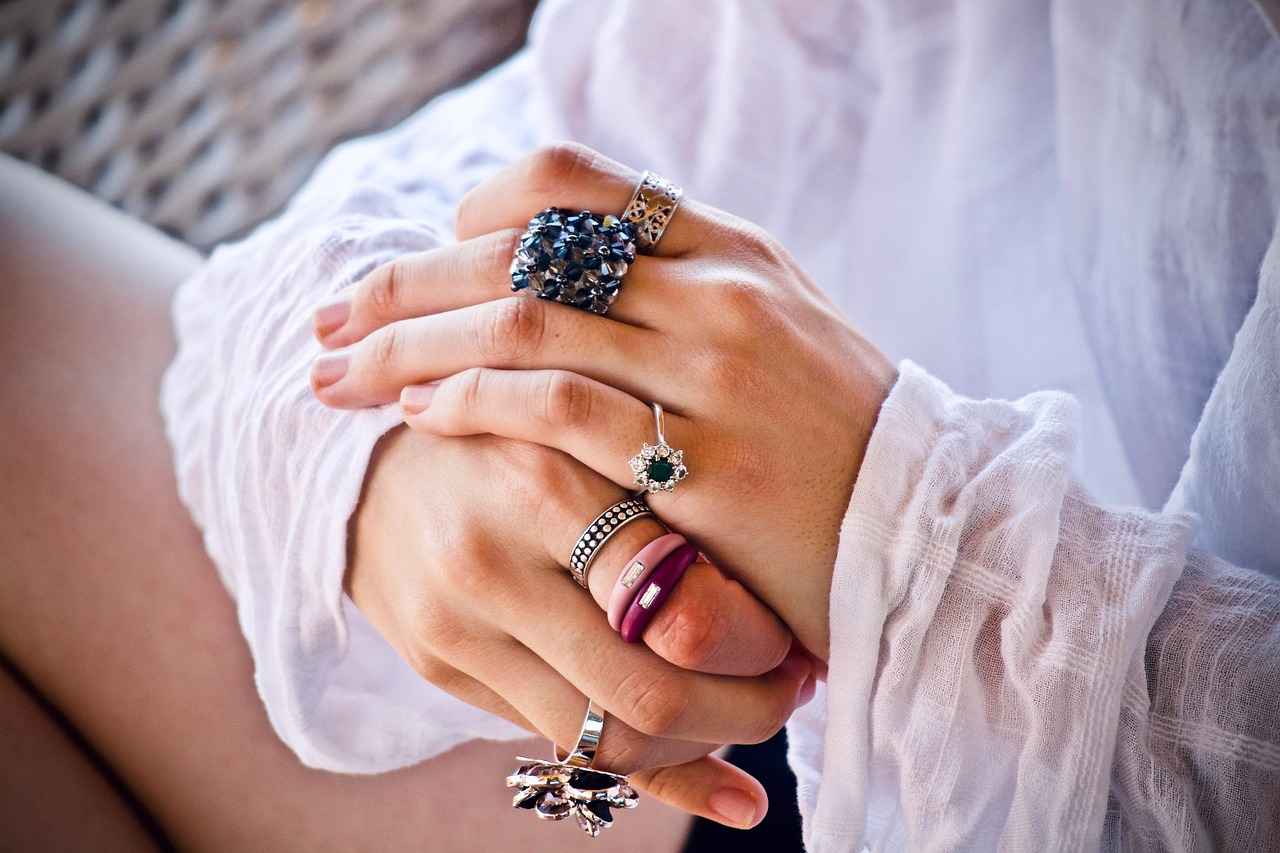
Signs Your Jewelry is Damaged by Humidity
Understanding the signs of humidity damage in your jewelry is crucial for ensuring its longevity. Excessive moisture can lead to various issues that, if left unaddressed, can result in irreversible harm. In this section, we will explore the common indicators of humidity damage and the necessary steps to take for timely intervention.
- Tarnishing and Discoloration: One of the most noticeable signs of humidity damage is tarnishing. This occurs when moisture reacts with the metal, leading to a dull, discolored appearance. Silver jewelry is particularly vulnerable, often developing a black or brown film.
- Corrosion and Pitting: Corrosion is a more severe form of damage that can manifest as small holes or pits on the metal surface. This is especially common in jewelry containing copper alloys, which can deteriorate rapidly in humid conditions.
- Loose Gemstones: Excess moisture can weaken the settings of gemstones, leading to loose or dislodged stones. If you notice any stones shifting, it may be a sign that humidity is affecting the integrity of your jewelry.
- Rust on Metal Components: If your jewelry includes metal components like clasps or chains, look for signs of rust. Rust indicates that moisture has penetrated the metal, compromising its strength and appearance.
Early detection is key to preventing further damage. Regularly inspect your jewelry for the following:
- Visual Inspection: Check for any discoloration or dullness in the metal. A shiny piece should maintain its luster; any signs of tarnish should be addressed immediately.
- Feel for Roughness: Run your fingers along the surface of your jewelry. If it feels rough or has an unusual texture, this could indicate corrosion.
- Check Gemstone Settings: Gently wiggle the gemstones in their settings. If they feel loose, it’s time to consult a professional.
If you identify any of the above signs, it’s important to act quickly:
- Clean Your Jewelry: Use a soft cloth to gently clean tarnished areas. For deeper cleaning, consider using a mild jewelry cleaner suitable for the specific metal type.
- Store Properly: Ensure your jewelry is stored in a dry environment. Use anti-tarnish pouches or silica gel packs to absorb excess moisture.
- Seek Professional Help: If damage is severe, consult a jeweler for professional cleaning or repairs. They can restore your jewelry and prevent further issues.
To protect your jewelry from humidity damage in the future, consider the following:
- Avoid Wearing Jewelry in Humid Conditions: If possible, remove your jewelry before engaging in activities that may expose it to moisture, such as swimming or exercising.
- Use Protective Coatings: Some products can be applied to jewelry to create a barrier against moisture. Research options that are safe for your specific materials.
- Regular Maintenance: Schedule regular inspections with a professional jeweler to assess the condition of your jewelry and address any potential issues before they escalate.
By recognizing the signs of humidity damage and taking proactive steps, you can ensure that your jewelry remains beautiful and intact for years to come.
Tarnishing and Discoloration
are among the first signs of humidity damage that can affect your precious jewelry. Recognizing these issues early is crucial in preventing further deterioration. This section will guide you through identifying tarnishing and discoloration, as well as the necessary steps to take for repair and prevention.
Humidity can cause metals such as silver and gold to react with moisture and air, resulting in a dull, tarnished appearance. For example, silver jewelry often develops a dark, tarnished layer known as silver sulfide. This occurs when sulfur compounds in the air interact with the silver, particularly in humid conditions. Gold, while more resistant to tarnishing, can still show signs of discoloration due to the presence of other metals in its alloy.
- Spotting Tarnishing: Look for a change in color or dullness on the surface of your jewelry. Silver may appear gray or black, while gold might lose its shine.
- Identifying Discoloration: Discoloration can manifest as uneven patches or a yellowish tint, especially in gold pieces that contain alloys like copper.
- Check for Residue: A sticky or greasy residue can also indicate that humidity has caused a reaction with lotions, perfumes, or environmental pollutants.
To effectively address tarnishing and discoloration, follow these steps:
- Immediate Cleaning: Use a soft cloth to gently buff away tarnish. For silver, a specialized silver polish can be beneficial. For gold, a mild soap solution can help restore shine.
- Regular Maintenance: Clean your jewelry regularly to prevent buildup. Consider using anti-tarnish cloths or storage pouches that inhibit tarnishing agents.
- Environmental Control: Keep your jewelry in a cool, dry place. Using silica gel packs in your jewelry box can help absorb excess moisture.
In addition to these steps, being proactive about your jewelry care is essential. Regular inspections can help you catch any signs of tarnishing or discoloration early. If you notice persistent issues, consider consulting a professional jeweler for advice on restoration options.
By understanding how to spot , you can take decisive action to protect your jewelry from humidity damage. Remember, the sooner you address these issues, the better chance you have of preserving the beauty and integrity of your precious pieces.
Corrosion and Pitting
Corrosion is a significant concern for jewelry owners, especially in humid climates. It can lead to irreversible damage and affect the aesthetic and structural integrity of your precious pieces. Identifying the signs of corrosion early on is crucial to prevent further deterioration. This article delves into the nature of corrosion, how it manifests in jewelry, and effective strategies to address it before it worsens.
Corrosion occurs when metals react with moisture, oxygen, and other environmental elements. In jewelry, this reaction can lead to pitting, which are small holes or depressions on the surface of the metal. Factors contributing to corrosion include:
- High humidity levels
- Exposure to sweat and skin oils
- Contact with harsh chemicals
Being able to recognize the early signs of corrosion can save your jewelry from extensive damage. Look out for:
- Tarnishing: A dull or discolored surface is often the first indication that corrosion is beginning.
- Pitting: Small holes or craters on the surface of the metal can develop over time.
- Flaking: If you notice pieces of metal peeling away, it’s a clear sign that corrosion is present.
If you identify signs of corrosion, immediate action is necessary. Here are some effective strategies:
- Regular Cleaning: Use a soft cloth to gently clean your jewelry, removing moisture and oils that can contribute to corrosion.
- Professional Assessment: If corrosion is severe, seek help from a professional jeweler who can assess the damage and recommend restoration techniques.
- Storage Solutions: Store your jewelry in a cool, dry place, using anti-tarnish pouches or silica gel packs to absorb excess moisture.
Prevention is always better than cure. Here are some best practices to keep your jewelry safe from corrosion:
- Avoid Humid Environments: Whenever possible, avoid wearing jewelry in high-humidity situations, such as swimming or exercising.
- Use Protective Coatings: Consider applying a protective coating specifically designed for jewelry to shield it from moisture and air.
- Routine Inspections: Regularly inspect your jewelry for signs of wear or corrosion, allowing for timely intervention.
Sometimes, home remedies are not enough to tackle corrosion. If you notice severe pitting or discoloration, it may be time to consult a professional jeweler. They can provide:
- Cleaning Services: Specialized cleaning methods can restore your jewelry’s shine without causing additional damage.
- Repair Options: For pieces that have suffered extensive corrosion, professional repair can help restore them to their original condition.
In conclusion, understanding corrosion and its signs is vital for any jewelry owner, particularly in humid climates. By taking proactive steps to prevent and address corrosion, you can ensure your jewelry remains beautiful and intact for years to come.
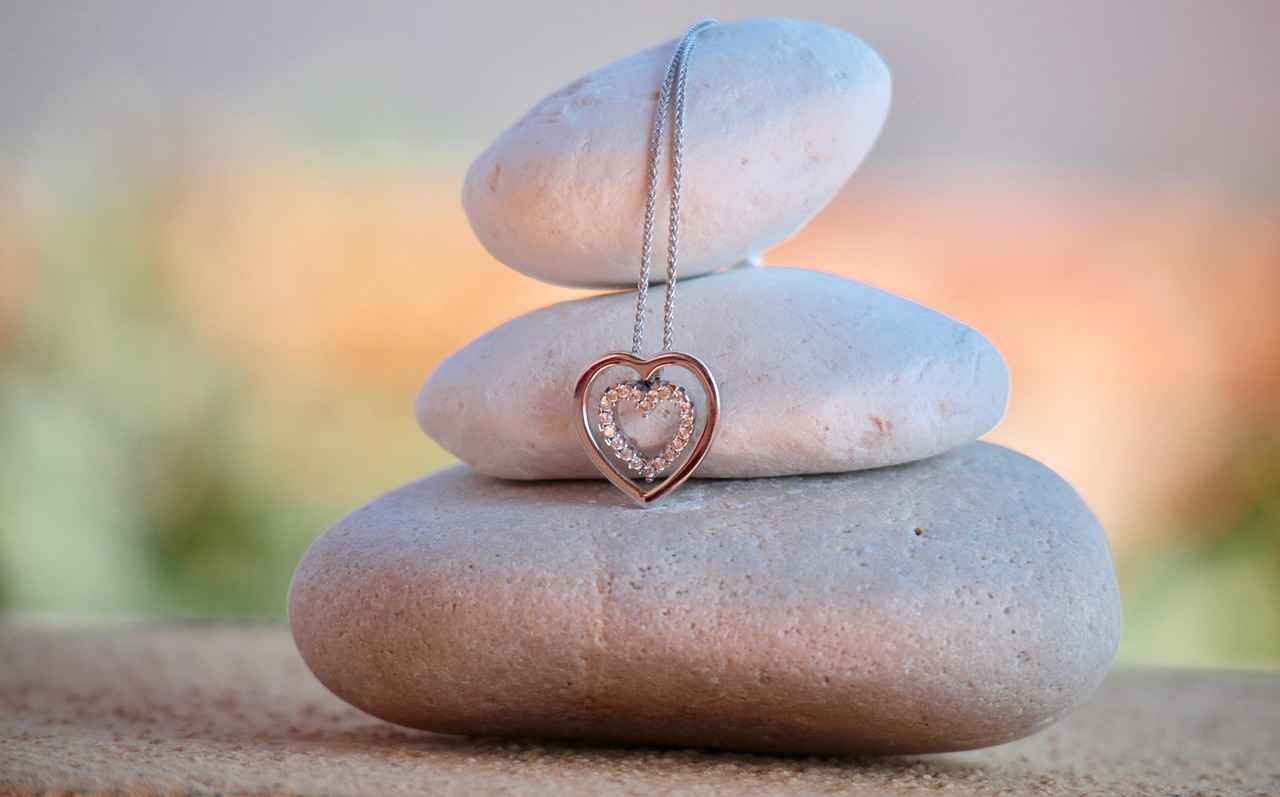
Professional Cleaning and Restoration Options
When it comes to maintaining the beauty and integrity of your jewelry, can be invaluable. While regular home care is essential, there are instances when expert intervention is necessary to restore your treasured pieces to their former glory. This section will guide you on when to seek professional help and the various services available.
Recognizing the right time to consult a professional is crucial for preserving your jewelry. Here are some indicators:
- Severe Tarnishing: If your gold or silver jewelry shows significant discoloration that home cleaning cannot remove, it’s time to seek professional help.
- Visible Damage: Cracks, chips, or loose stones in your gemstones indicate that a jeweler’s expertise is required.
- Frequent Wear: Jewelry that is worn daily may need periodic professional cleaning to avoid buildup of dirt and oils.
- Sentimental Value: If the piece holds significant emotional value, investing in professional restoration can ensure it is preserved for years to come.
Professional jewelers offer a range of services designed to restore and maintain your jewelry:
- Cleaning: Professional cleaning removes tarnish and dirt that regular cleaning methods may miss. Jewelers use ultrasonic cleaners and steam cleaning methods for deep cleaning.
- Polishing: This service restores the shine to metals, removing scratches and minor imperfections, making your jewelry look brand new.
- Repair: Jewelers can fix broken clasps, re-set loose stones, and perform soldering to repair broken chains or rings.
- Restoration: For antique or heirloom pieces, restoration services can repair and maintain the original design, ensuring its historical integrity.
- Appraisal: If you’re unsure of your jewelry’s value, professional appraisals can provide an accurate assessment for insurance or resale purposes.
Choosing the right jeweler is essential for ensuring your jewelry is handled with care. Here are some tips:
- Research: Look for jewelers with good reviews and recommendations from friends or family.
- Certifications: Check if the jeweler has certifications from recognized organizations, indicating their expertise and professionalism.
- Portfolio: Review their previous work to gauge their skill level and the quality of their services.
- Consultation: Schedule a consultation to discuss your needs and gauge their customer service and knowledge.
Understanding the costs associated with professional jewelry care can help you budget appropriately. Here’s a breakdown of typical pricing:
| Service | Estimated Cost |
|---|---|
| Cleaning | $20 – $50 |
| Polishing | $30 – $100 |
| Repair (e.g., clasp replacement) | $50 – $200 |
| Restoration | $100 – $500+ |
| Appraisal | $50 – $150 |
Investing in professional jewelry care not only helps maintain the aesthetic appeal of your pieces but also extends their lifespan. By understanding when to seek expert help and the services available, you can ensure that your jewelry remains a cherished part of your collection for years to come.
Finding a Reliable Jeweler
When it comes to maintaining the beauty and integrity of your jewelry, is of utmost importance. Whether it’s for routine cleaning, repairs, or restoration, a skilled professional can make all the difference. This guide will help you navigate the process of selecting a reputable jeweler who will treat your precious pieces with the care they deserve.
Jewelry is not just an accessory; it often holds sentimental value. A trustworthy jeweler can provide expert care that ensures your items remain in excellent condition over time. Poor handling or inadequate techniques can lead to irreversible damage, making it essential to choose wisely.
- Experience and Expertise: Look for jewelers with a solid background in the field. Experience often translates to better skill in handling various types of jewelry.
- Certifications: Check if the jeweler has relevant certifications, which can indicate a commitment to quality and professionalism.
- Customer Reviews: Online reviews and testimonials can provide insights into the jeweler’s reputation. Seek out jewelers with consistently positive feedback.
- Service Range: Ensure the jeweler offers a comprehensive range of services, including cleaning, repairs, and custom work.
Finding a reliable jeweler can be done through various channels:
- Referrals: Ask friends, family, or colleagues for recommendations based on their experiences.
- Online Research: Utilize search engines and social media platforms to find local jewelers. Websites like Yelp can provide ratings and reviews.
- Professional Associations: Look for jewelers affiliated with professional organizations, which often have high standards for their members.
Before entrusting your jewelry to a jeweler, consider the following:
- Visit the Store: A visit can give you a feel for the jeweler’s professionalism and the quality of their work environment.
- Ask Questions: Don’t hesitate to inquire about their techniques, materials used, and warranty policies. A good jeweler will be happy to explain their processes.
- Request Samples: If possible, ask to see examples of their previous work. This can help you gauge their skill level and style.
A reputable jeweler should provide:
- Transparent Pricing: Clear explanations of costs associated with services.
- Timely Service: Reasonable turnaround times for repairs and cleaning.
- Aftercare Advice: Guidance on how to care for your jewelry post-service to maintain its condition.
Regular consultations with a jeweler can help maintain your jewelry’s condition. It’s advisable to have your pieces professionally cleaned and inspected at least once a year, especially if you live in a humid climate.
In conclusion, finding a reliable jeweler is essential for the proper care and maintenance of your jewelry. By considering experience, customer feedback, and the range of services offered, you can make an informed decision that will protect your treasured pieces for years to come.
Cost of Professional Services
Understanding the cost of professional jewelry services is essential for maintaining your precious items. Whether you’re considering cleaning, repair, or restoration, knowing what to expect in terms of pricing can help you budget effectively and ensure your jewelry remains in top condition.
Jewelry cleaning is a fundamental service that can range in price depending on several factors, including the type of jewelry, the materials involved, and the complexity of the cleaning process. On average, you can expect to pay:
- Basic Cleaning: $20 – $50 for simple pieces like gold or silver rings.
- Detailed Cleaning: $50 – $100 for intricate designs or pieces with multiple gemstones.
- Specialized Cleaning: $100 and up for high-end pieces or those requiring ultrasonic cleaning.
Restoration services can be more variable in cost due to the nature of the repairs needed. Common restoration services include:
- Stone Replacement: $50 – $300 depending on the type of stone and its size.
- Metal Repair: $40 – $200 for resizing or soldering broken pieces.
- Polishing and Refinishing: $30 – $100 to restore shine and luster to worn pieces.
Several factors can influence the overall cost of professional jewelry services:
- Type of Jewelry: Fine jewelry often requires more care and expertise, leading to higher costs.
- Material Composition: Precious metals and gemstones may incur additional fees for specialized care.
- Location of Service: Jewelers in urban areas may charge more than those in rural locations.
- Expertise of the Jeweler: Highly skilled jewelers with a good reputation may charge premium rates.
It’s crucial to know when to seek professional help for your jewelry. If you notice signs of damage such as tarnishing, loose stones, or scratches, it’s time to consult a jeweler. Regular maintenance can also help prevent costly repairs down the line, making it a wise investment.
When searching for a jeweler, consider the following:
- Reviews and Recommendations: Check online reviews or ask friends for recommendations.
- Certifications: Look for jewelers with proper certifications and credentials.
- Portfolio: Review their previous work to gauge their expertise and quality.
By understanding the costs associated with professional jewelry care and knowing what services are available, you can make informed decisions about the maintenance and restoration of your cherished pieces. Investing in professional care not only helps preserve your jewelry but can also enhance its value over time.

Long-Term Strategies for Humidity Management
When it comes to preserving your jewelry, especially in humid climates, long-term strategies are essential. Implementing these strategies can significantly reduce the risk of humidity-related damage, ensuring your precious pieces remain in pristine condition for years to come. This section delves into various proactive measures that can be taken to safeguard your jewelry from the detrimental effects of moisture.
Humidity can lead to a host of problems for jewelry, including tarnishing, corrosion, and even gemstone damage. By adopting long-term strategies, you can create a protective barrier that minimizes these risks. This not only preserves the aesthetic appeal of your jewelry but also maintains its value over time.
One of the most effective long-term strategies is to invest in high-quality jewelry. Quality pieces are typically made from superior materials that are more resistant to humidity-related issues. For instance, jewelry made with platinum or high-karat gold is less likely to tarnish compared to lower-quality alternatives. This investment pays off in the long run as it reduces the frequency of repairs and replacements.
Conducting regular inspections of your jewelry collection is crucial. Aim to check your pieces at least once every few months. During these inspections, look for signs of damage such as tarnishing or discoloration. Early detection allows for timely intervention, which can prevent more severe damage. If you notice any issues, consider consulting a professional jeweler for advice.
Incorporating anti-tarnish products into your jewelry storage routine can significantly extend the life of your pieces. Products such as anti-tarnish cloths, pouches, and boxes are designed to absorb moisture and prevent tarnishing. Additionally, using silica gel packets in your jewelry box can help control humidity levels, providing an extra layer of protection.
Maintaining a controlled environment for your jewelry storage is another vital strategy. Consider using a dehumidifier in rooms where you store your jewelry, especially in areas prone to high humidity. This can help keep moisture levels in check, further protecting your pieces. Additionally, storing jewelry in a cool, dry place away from direct sunlight can also contribute to its longevity.
Establishing a routine for cleaning and maintenance is essential for long-term jewelry care. Use gentle cleaning solutions and soft cloths to clean your pieces regularly, especially after wearing them. This practice helps remove moisture and oils that can lead to tarnishing. For more delicate items, consider professional cleaning services to ensure they are maintained without risk of damage.
Understanding the specific needs of your jewelry can greatly enhance its longevity. Different materials react differently to humidity and other environmental factors. Take the time to research the best care practices for your specific pieces, whether they are made of gold, silver, or contain precious gemstones. This knowledge will empower you to take the right steps in preserving your jewelry.
By implementing these long-term strategies, you can effectively protect your jewelry from humidity damage over time. Investing in quality pieces, conducting regular inspections, utilizing anti-tarnish products, creating a controlled environment, and maintaining proper cleaning routines are all proactive measures that contribute to the longevity of your cherished collection.
Investing in Quality Pieces
Investing in quality jewelry is not just about aesthetics; it is also a smart financial decision that can save you money over time. When you choose high-quality pieces, you are opting for durability and resilience against environmental factors, particularly in humid climates. This article will delve into the reasons why investing in quality jewelry is beneficial for your wallet and your style.
High-quality jewelry is often crafted from superior materials, which means it is less likely to suffer from damage due to humidity. Unlike cheaper alternatives, which may tarnish or corrode quickly, quality pieces are designed to withstand the test of time. Investing in quality jewelry can save you money in the long run because you will not need to replace or repair your pieces as frequently.
Quality jewelry is made with precision and care, ensuring that each piece is durable and long-lasting. For instance, gold and platinum are more resistant to tarnishing compared to silver or lower-grade metals. This means that, even in humid conditions, your investment will maintain its beauty and integrity.
When you invest in high-quality jewelry, you are also investing in pieces that retain their value. Fine jewelry often appreciates over time, making it a worthwhile addition to your collection. Unlike fast fashion items, which lose their value as soon as they are purchased, quality jewelry can be a valuable asset that you can pass down through generations.
Quality jewelry is typically crafted by skilled artisans who pay attention to detail. This level of craftsmanship not only enhances the aesthetic appeal but also ensures that the piece is structurally sound. Well-made jewelry is less prone to breakage, which is particularly important in humid environments where moisture can weaken materials.
Investing in quality jewelry often comes with an emotional component. Many people purchase fine jewelry to commemorate special occasions or milestones. These pieces carry sentimental value that transcends their monetary worth. Quality jewelry can serve as a lasting reminder of cherished memories, making it an invaluable part of your collection.
As mentioned earlier, high-quality jewelry is typically more resilient to environmental factors. For example, pieces made from high-grade stainless steel or coated with protective finishes can withstand humidity without tarnishing or corroding. This resilience means you can wear your jewelry with confidence, regardless of the weather.
- Check for Hallmarks: Look for stamps indicating the metal’s purity.
- Inspect Craftsmanship: Examine the piece for any signs of poor workmanship.
- Research the Brand: Familiarize yourself with reputable jewelers known for quality.
In conclusion, investing in quality jewelry is a wise decision that offers numerous benefits, from durability and value retention to emotional significance. By choosing high-quality pieces, you not only enhance your personal style but also make a sound financial investment that can last a lifetime.
Regular Inspections
Regular inspections of your jewelry are an essential aspect of maintaining its beauty and integrity, especially in humid climates where moisture can wreak havoc on precious pieces. By routinely checking your items, you can identify potential issues before they escalate into more significant problems. But how often should you inspect your jewelry, and what specific signs should you be looking for?
It is advisable to perform inspections at least every three to six months. However, if you live in particularly humid areas or wear your jewelry frequently, consider checking your pieces more often. Regular inspections can help you catch minor issues like tarnishing or loose stones before they become costly repairs.
- Tarnishing: Look for any dullness or discoloration, especially on silver and gold pieces. Tarnishing is often an early sign of moisture damage.
- Loose Stones: Gently shake your jewelry to see if any stones rattle in their settings. If they do, it may be time for a professional tightening.
- Corrosion: Check metal components for signs of corrosion, which can appear as pitting or flaking. This is particularly critical for costume jewelry.
- Links and Clasps: Inspect chains and clasps for any signs of wear or breakage. A weak clasp can lead to lost jewelry.
When inspecting your jewelry, follow these steps for a comprehensive evaluation:
- Clean Your Jewelry: Start by cleaning your pieces with a soft cloth to remove any dirt or oils that may obscure your view.
- Examine Each Piece Individually: Take the time to look at each item closely, focusing on areas where damage is more likely to occur.
- Use Magnification: If necessary, use a jeweler’s loupe or magnifying glass to inspect intricate details and settings.
- Document Findings: Keep a record of any issues you find, along with the date of inspection, to track changes over time.
If you discover any problems during your inspection, it’s crucial to address them promptly:
- For Minor Tarnishing: Clean the affected areas with a gentle jewelry cleaner or a polishing cloth designed for your specific metal.
- For Loose Stones: Take your jewelry to a professional jeweler for tightening to avoid losing any precious gems.
- For Corrosion: If corrosion is present, consult a professional for restoration options to prevent further damage.
By incorporating regular inspections into your jewelry care routine, you can extend the life of your pieces and keep them looking their best. Remember, early detection is key to preventing more severe damage and costly repairs. So, make it a habit to check your jewelry regularly and enjoy peace of mind knowing your treasures are well cared for.
Frequently Asked Questions
- How does humidity affect my jewelry?
Humidity can lead to tarnishing, corrosion, and discoloration of metals and gemstones. The moisture in the air reacts with the materials, causing them to deteriorate over time.
- What types of jewelry are most prone to humidity damage?
Gold and silver jewelry are particularly affected, with silver being more susceptible to tarnishing. Additionally, certain gemstones can absorb moisture, leading to potential damage.
- How can I prevent tarnishing on my gold jewelry?
To keep your gold jewelry shining, store it in a dry place, use anti-tarnish pouches, and clean it regularly with a soft cloth to remove any moisture or dirt.
- What should I do if my jewelry shows signs of tarnishing?
If you notice tarnishing, gently clean the affected area with a jewelry cleaner or a mixture of baking soda and water. For severe tarnish, consider seeking professional cleaning services.
- How should I store my jewelry in humid conditions?
Use airtight containers with silica gel packs to absorb moisture. Avoid storing jewelry in bathrooms or other damp areas to minimize exposure to humidity.
- When is it best to remove my jewelry?
It’s wise to remove your jewelry during activities that involve water, such as swimming or showering, and when applying lotions or perfumes to prevent damage.
- What are the signs of corrosion on jewelry?
Signs of corrosion include pitting, discoloration, and a rough texture on the surface of the metal. If you see these signs, it’s important to address the issue promptly.
- How can I find a reliable jeweler for professional cleaning?
Look for jewelers with good reviews and recommendations from friends or family. Check their credentials and ensure they specialize in the type of jewelry you own.
